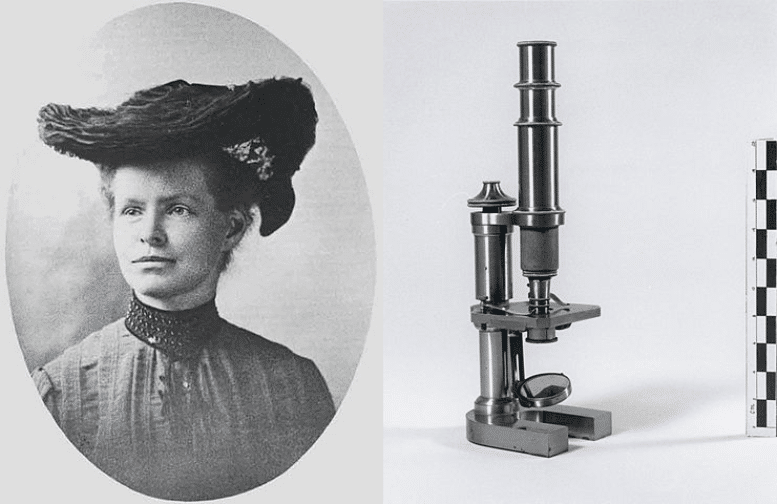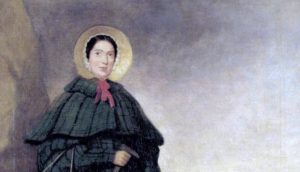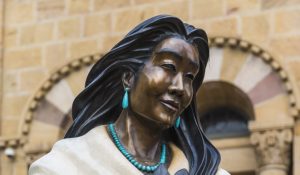India has always been very proud of its contributions to science, from Aryabhatta to Bhaskara II and from C.V. Raman to Satyendra Nath Bose. These names continue to inspire the new generations of Indian students and aspiring scientists. Unfortunately, through the years, we have forgotten a lot of people and their contributions. Most of them being the women who made remarkable progress and achievement for humanity but were forgotten.

One of such women was Bibha Chowdhuri. If you haven’t heard that name, I wouldn’t blame you. Although her contributions have been incredible, a lot of them have been erased from the books. She was the first Indian woman to earn a PhD in Physics. Her research into cosmic rays brought her very close to a Nobel Prize.
Bibha Chowdhuri was born in Kolkata, India into a family with a tradition of educating their children, including the women. She attended Bethune School in Kolkata and then finished her B.Sc degree with Honors in Physics from Scottish Church College in Kolkata. Her college had the privilege of having famous alumni like Swami Vivekananda and Netaji Subhash Chandra Bose. After completing her MSc in Physics from University of Calcutta in 1936 she started her research work. She approached Dr. Debendra Mohan Bose, who was a relative from her mother’s side. He was reluctant at first but then allowed her to join his research group studying subatomic particles.
She moved to the Bose institute when Dr. Bose shifted there from University of Calcutta and published three major papers during her time there. Her research during this period was focused on cosmic rays as they were the only source of subatomic particles back then.
Without any particle accelerators, people back then used to go to top of mountains and try to study subatomic particles in these rays using cloud chambers. A cloud chamber is an enclosed instrument which keeps ethanol or other substance in vapor state. If a high energy particle travels through this chamber, it leaves a trail like aeroplanes do in the sky. You can study these trails to find out their charge, mass, and momentum. Such trails are very short lived however and there weren’t many ways to study them before they vanished.
Dr Bose and Bibha solved this problem by using photographic plates which could capture the trails of subatomic particles traveling through them. They placed such plates on two mountains of different elevation. This allowed them to study not only the subatomic particles but also how they decayed while traveling through the atmosphere.
Bibha studied these plates and observed two new particles. These were two particles were a mason, specifically pi-mason and muon which is a lepton. Her discovery was years before any similar discoveries. She also calculated their mass to a very good degree of approximation. She and Dr. Bose published this discovery in Nature and other journals. Due to the second world war, Bibha could not get better plates to continue this research and had to abandon this project.
About seven years later, a British physicist, Dr. Cecil Frank Powell did the same experiment with better plates. He received the Nobel Prize for his discovery of Pi Masons and Muons. In his book, Dr. Powell acknowledged Bibha and C M Bose’s research and their experiment. His results on the mass of these particles were also very similar to the ones calculated by Bibha during her research.
After her project, Bibha moved to Manchester in U.K. in 1945 to work under Sir Patrick Blackett. He became her doctoral advisor with her research into extensive air showers. Extensive air showers are part of cosmic ray mechanisms when a high energy particle collides with a neutron of earth’s atmosphere. An equivalent interaction is artificially done in most modern hydron colliders. Sir Patrick had invented a new type of Cloud Chamber which worked along with a Giger counter to be more sensitive to particles.
She used this device to formulate her thesis and earned her PhD. He later on won the Nobel Prize for this invention and subsequent discoveries. Bibha’s contributions to his later research is unknown.
Bibha was hired by Dr Homi J. Bhabha into his newly formed Tata Institute of Fundamental Research in 1949. She was the first female scientist to be hired by the institute. There she continued her research into extensive air showers and formulated new techniques to detect and observe particles.
She left TIFR in 1953 and started working at Bengal Engineering College in her hometown Kolkata. However soon after she was recruited by the Physical Research Laboratory (PRL) in Ahmedabad when Dr. Vikram Sarabhai was its director. The famous Kolar Gold Fields experiment was under PRL administration.

Bibha joined the project and started conducting experiments in collaboration with TIFR. She was involved in the whole process, from setting up the experiment to administration of staff. Most of her contributions during this period however have been removed from KGF and PRL records. When Dr Sarabhai died, her plans for a new project at Mount Abu died with him. Bibha soon left the institute as voluntary retirement.
Her 14 years of research at PRL has all but been erased. None of her research was ever made public and her contributions have never been acknowledged. Her memory survives as the ‘special thanks’ notes in her collaborators and staff’s papers who later won National Awards for their contributions.
After that Bibha continued to be a visiting scientist at Saha Institute, University of Calcutta and IACS. She continued to do research and publish papers until the year of her death in 1991.
Others involved in KGF experiments got national awards and recognition.
Bibha once said “it is a tragedy that we have so few women physicists today”. That continues to be true. Fortunately, now we know of her story, and perhaps it will inspire the new generation of women scientists, just waiting to lead the way.
Bibha Chowduri Quick FAQs
What was Bibha Chowduri’s contribution to science?
Bibha Chowduri made great contributions to particle physics and the science of cosmic rays. She was the first Indian woman to earn a PhD in Physics.
Is Bibha Chowduri’s work available on Google Scholar?
Her thesis is not available online; however, you can read a paper on ResearchGate on Her Cosmic Ray Studies in Manchester by s. C. Roy and Rajinder Singh.
Next, read about Nettie Stevens: A Discoverer of Sex Chromosomes, or Mary Treat, Victorian Entomologist and Visionary Biologist.

I am doing a podcast series about women of color in STEM fields. It is called Whastic and we put out about 2-4 episodes a month. Check out: https://podcasts.whastic.com







Leave a Reply